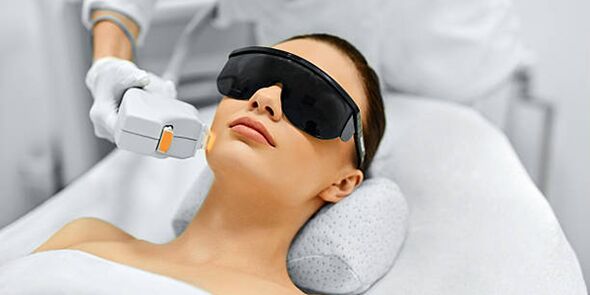
Devices for laser rejuvenation are represented on the market by devices for laser ablation (solid and fractional), devices for non-ablative laser rejuvenation (erbium, neodymium, diode laser) and devices for laser phoresis. Depending on the wavelength, laser radiation penetrates to different depths and affects strictly defined targets in the tissues (structural proteins, blood, water, pigment), so each laser rejuvenation device solves its own range of aesthetic problems.
Laser removal equipment
The main target of ablative lasers for rejuvenation is water, which evaporates during the procedure. In the area of damage, an active process of cell regeneration starts, the skin is renewed, renewed and tightened. Continuous laser ablation (laser peeling) is very painful and requires a long rehabilitation, so now experts prefer devices for fractional (spot) laser rejuvenation. They are considered an alternative to surgical lifting - the results are truly impressive. Fractional laser rejuvenation procedure is indicated for pronounced signs of aging: ptosis, deep wrinkles, age-related pigmentation, visible defects in skin relief.
Non-ablative laser resurfacing devices
The group of devices for non-ablative laser rejuvenation is quite large. Neodymium lasers are suitable for removing vascular patterns from the skin (the target is blood hemoglobin). Rejuvenation diode lasers primarily affect collagen, causing it to remodel and consequently lift and tighten the skin. Non-ablative erbium lasers work similarly to ablative laser resurfacing machines—they vaporize water and damage tissue, activating regeneration—but do not affect the surface of the skin.
Apparatus for laser drilling
Devices for laser phoresis ensure deep penetration of rejuvenating cocktails into the skin (most often, hyaluronic acid preparations act in this role). This procedure allows you to deeply hydrate the skin, completely soften fine wrinkles, improve complexion and skin texture. Laserphoresis does not cause tissue heating and gently stimulates natural renewal processes.
What kind of laser rejuvenation equipment to choose is a difficult question, because the "specialization" of lasers is quite narrow. In well-known clinics of aesthetic medicine, ablative lasers are used more often to achieve the effect of radical rejuvenation. Beauty salons usually offer non-invasive laser rejuvenation or anti-aging laser phoresis. The decision to buy one or another laser for rejuvenation depends on many factors: budget, local demand, qualifications of specialists.






































